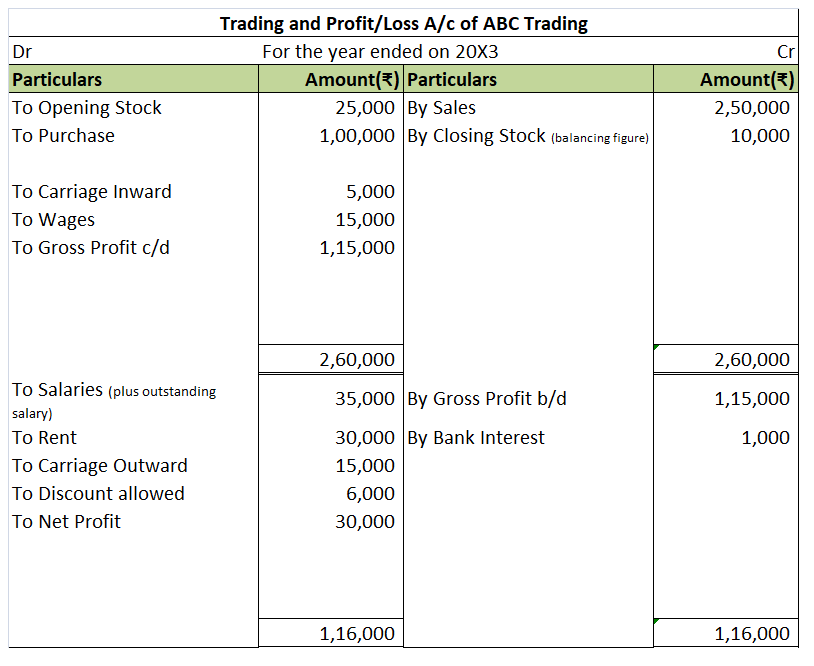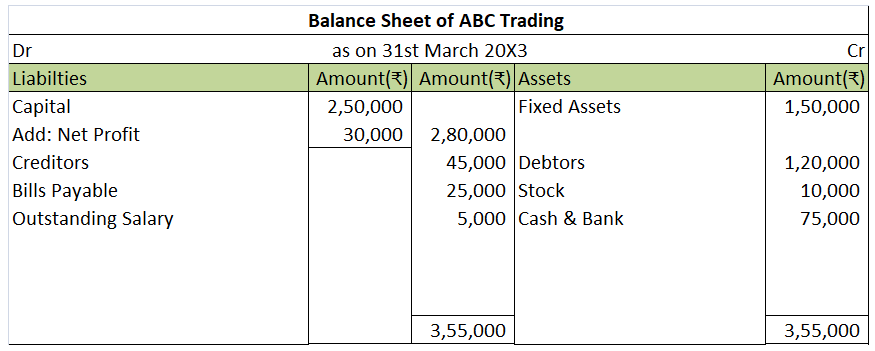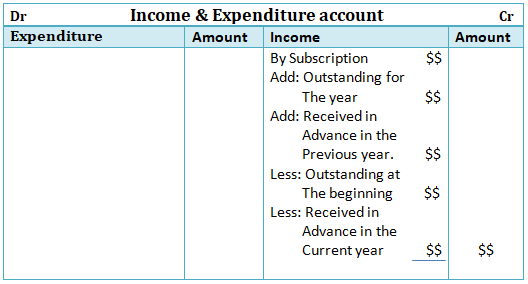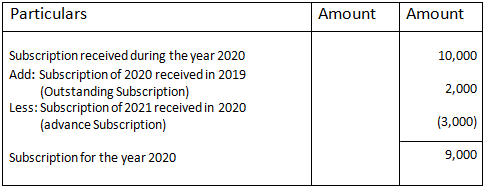Brief Introduction The stock of finished goods left unsold at the end of the year is known as closing stock. As closing stock represent an asset i.e. the unsold finished goods, it has a debit balance. Closing stock appears on the credit side of the trading account and on the asset side of the balanRead more
Brief Introduction
The stock of finished goods left unsold at the end of the year is known as closing stock. As closing stock represent an asset i.e. the unsold finished goods, it has a debit balance.
Closing stock appears on the credit side of the trading account and on the asset side of the balance sheet. But, if closing stock is adjusted against purchase i.e. deducted from purchase account balance, then it doesn’t appear in the trading account.
It is always shown on the asset of the balance irrespective of its treatment as discussed above because it is an asset.
Though no ledger is maintained for closing stock in financial accounts of a business, the journal entry for the closing stock is passed and is as below:
Closing stock A/c Dr Amt
To Trading A/c Amt
(When the closing stock appears in trading a/c)
OR
Closing stock A/c Dr Amt
To Purchase A/c Amt
(When closing stock is adjusted against purchase A/c and not shown in trading a/c)
Generally, the closing stock is shown separately in the trial balance because it is already part of the purchase account balance.
Closing stock is ascertained at the end of the financial year and it has great importance as it directly affects the gross profit or loss of a business. Closing stock at end of a year becomes the opening stock of the next financial year.
Numerical Example
ABC trading reported the following particulars at the end of the financial year 20X2-20X3:

We will draw the trading and P/L account and balance sheet of ABC Trading using the above information.
As the closing stock is not given, we will calculate the closing stock as a balancing figure.
It can be also calculated using this formula:
Closing stock = Opening stock + Purchase + Gross Profit – Sales


















Sometimes a business may earn an income by delivering the goods/services within the stipulated time. But the business may not have issued an invoice to the customer. Such a scenario is what is called unbilled revenue. Note that as per the accrual concept of accounting, sales are recognized on the daRead more
Sometimes a business may earn an income by delivering the goods/services within the stipulated time. But the business may not have issued an invoice to the customer. Such a scenario is what is called unbilled revenue.
Note that as per the accrual concept of accounting, sales are recognized on the day it was made, irrespective of whether the business receives cash or not.
The business records unbilled revenue by passing the following journal entry:
Unbilled Revenue is treated as an asset because it is yet to be fully recognized as an income. Therefore it is debited. Revenue A/c is credited as there is an increase in income.
Once the bill/invoice has been issued to the customer, the following entry is passed to close the Unbilled Revenue A/c.
Let me explain this concept with an example,
Luca Traders, a business dealing in stationery and office supplies receives an order on August 5th for 1,000 pens worth 10 each. On August 8th they deliver the pens but they are yet to issue an invoice to the customer. They issue the invoice only on August 13th.
So the sales revenue of 10,000 (1,000*10) will be treated as an unbilled revenue for the period of August 8th – August 12th. On August 8th the following entry is made to record unbilled revenue.
When the invoice is sent to the customer on August 13th, the following journal entry is posted to close the unbilled revenue A/c.